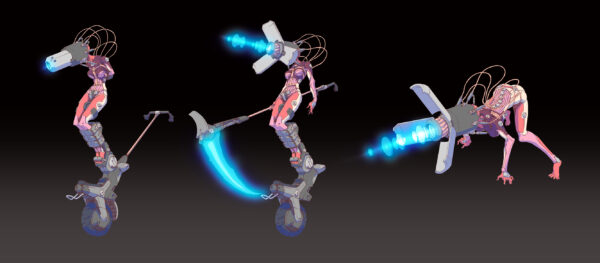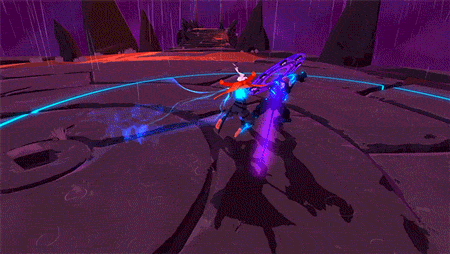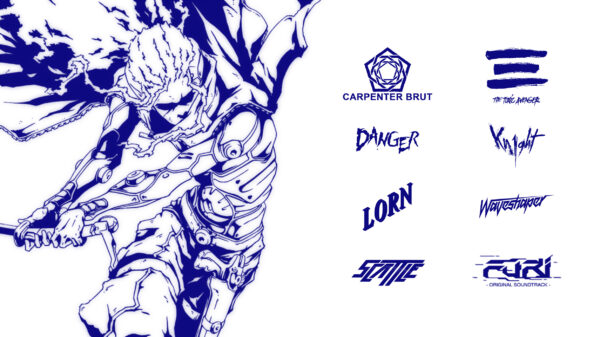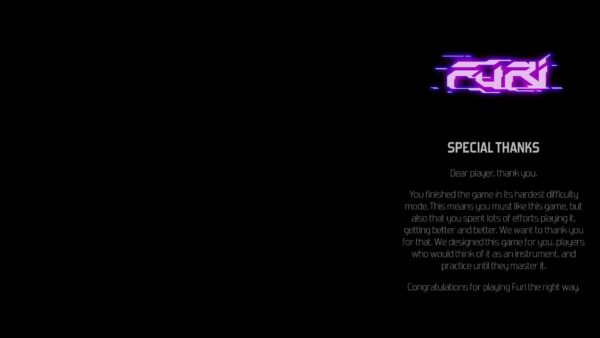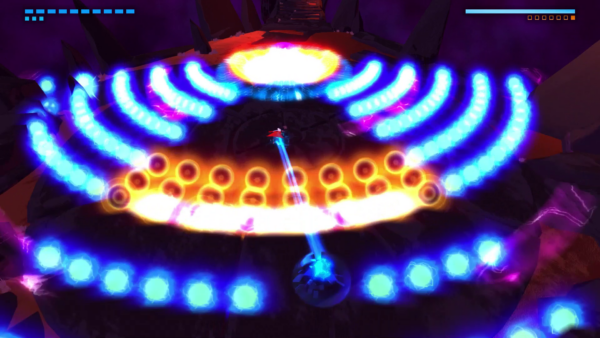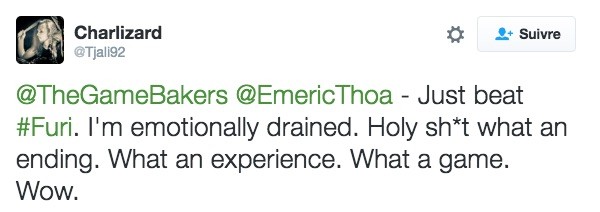Une industrie de talents.
Le jeu vidéo est avant tout une industrie de talents. Les ingénieurs, les artistes, les concepteurs qui la composent ne sont pas évalués et appréciés tant pour leurs compétences théoriques et leur parcours scolaire que pour la capacité qu’ils ont à mettre en œuvre des compétences pratiques, des talents uniques, dans le contexte particulier d’une production de jeu vidéo. Le talent ne se transmet pas. Le talent ne s’apprend pas à l’école. Le talent, on l’arrose comme une plante verte, on le travaille régulièrement, on le développe par soi-même. Mais si c’est une industrie de talents et que le talent ne s’apprend pas à l’école… A quoi sert l’école ?
Au cours de mes études j’ai fait de la programmation, de la conception web, de l’ergonomie, du jeu vidéo. Chez Ubisoft, publisher et développeur de jeux AAA, j’ai été amené à recruter des stagiaires ou de jeunes développeurs. Au sein de The Game Bakers, j’ai filtré plus de 500 CV sur les deux ans et demi qu’a duré la production de Furi. Cette expérience d’ex-étudiant et de recruteur m’a permis de réaliser que parfois, le système scolaire peut se révéler trompeur. Il nous fait croire que les formations, après le bac, vont nous « qualifier » à exercer un métier. C’est faux, dans tous les cas que j’ai pu observer jusqu’à présent. Les écoles seules ne forment pas les gens à un métier comme celui de développeur de jeu, de programmeur, d’artiste 3D ou de game designer.
Les écoles sont un contexte.
Un contexte extrêmement favorable à l’autoformation.
Au mentorat.
Au réseautage.
A la culture.
A l’expérimentation.
Mais se limiter au suivi d’une formation ne peut en aucun cas vous préparer à exercer un métier. C’est une croyance naïve de brochure publicitaire, et cet article est destiné à donner quelques clefs aux étudiants pour tirer le meilleur profit de ce contexte privilégié que sont ces écoles post-bac, qui forment au jeu vidéo, graphisme, game design, programmation et autres.
A force de trier les CV, de filtrer les bons et les mauvais portfolios, j’ai remarqué que les étudiants qui se distinguent sont systématiquement ceux qui ont su aller plus loin que ce que leur demandait leur formation. Un portfolio ou un CV qui n’indique que des projets d’école n’est plus suffisant. La concurrence est trop rude, il y a trop d’étudiants en France et à l’étranger, qui acquièrent de l’expérience avec des projets personnels, des jam, des stages. Et quand je parle d’expérience je ne parle pas seulement de compétences techniques, mais d’une maturité, d’une vision de la production qui dépasse celle du « joueur » et qui ne peut s’acquérir qu’à travers des processus multiples de développement, de création, d’ouverture d’esprit.
L’examen de tous ces CV m’a également permis d’observer que la plupart des étudiants en recherche de stage n’avaient qu’un ou deux projets d’école dans leur portfolio. A bac+3, +4, +5. Qu’ont-ils fait pendant ces dizaines de mois ? La plupart ont beaucoup joué, je n’en doute pas. La culture auto-centrée du jeu vidéo n’est jamais le problème. La culture générale, la curiosité, l’intérêt pour la création, la persévérance dans l’apprentissage sont des qualités bien plus rares.
L’accès aux outils n’a jamais été aussi facile, la documentation est partout sur le web. Le niveau n’a jamais été aussi haut. Il y a vingt ans, on pouvait entrer dans l’industrie du jeu parce qu’on avait été vendeur à Ultima, parce qu’on avait été pigiste pour Tilt, ou comme dans mon cas, parce qu’on avait créé un site web sur l’ergonomie. Ce n’est plus le cas. Le ticket d’entrée dans l’industrie du jeu est aujourd’hui similaire à celui de la musique, du théâtre, de la danse, de la BD.
Avis aux étudiants : il va falloir vous arracher.
Je n’ai pas de plus grand souhait que de voir le jeu vidéo français fleurir, s’épanouir, se révéler. Comme dans beaucoup d’autres domaines, la clef pour y parvenir est l’éducation. Mais l’éducation ne doit plus prendre la forme d’un maitre qui instruit l’élève. Les nouveaux médias ont donné à tous, pas seulement en France mais sur toute la planète, une nouvelle autonomie. Profitons du fait que le système universitaire Français est encore très peu coûteux en comparaison des autres pays et utilisons ces cocons que sont les écoles pour relever le défi.
Manuel de l’étudiant besogneux
Le portfolio > Le diplôme
Le portfolio est roi. Le diplôme n’intéresse que très modérément les recruteurs (voir pas du tout, dans mon cas). C’est vrai pour les graphistes, mais c’est aussi vrai pour les programmeurs ou les game designers. Ce n’est pas parce que votre spécialisation n’est pas « graphique » que vous ne devez pas avoir un portfolio avec des projets, des travaux, des preuves concrètes de votre compétence et expérience.
Le diplôme est un raccourci. Un recruteur qui a déjà recruté des stagiaires de telle ou telle formation va avoir un repère en tête, peut-être un a priori positif ou négatif. Mais c’est un filtre bonus, qui ne garantit rien, et ne suffit pas.
Note : le diplôme peut parfois s’avérer utile pour l’obtention d’un visa à l’étranger, qui va exiger un niveau bac+3 ou +4 dans certaines conditions.
La voie de l’autodidacte est possible
Le diplôme et la formation certifiée ne sont pas indispensables. Certains des meilleurs profils que j’ai croisé dans ma carrière étaient complètement autodidactes. Il faut avoir un sacré mental et une énergie incroyable, mais ces profils existent.
Quelques exemples concrets :
Eric Chahi, programmeur, concepteur, graphiste autodidacte.
Anthony Beyer, notre D.A. et tech art sur Furi, a fait un BTS communication visuelle, et a appris la 3D, la programmation, la vidéo, le compositing, la production de VFX, par lui-même. Aucune formation ne délivre à elle seule ce genre de profil couteau-suisse.
La spécialisation vs la polyvalence
Cela dépend de l’industrie que vous visez : l’industrie du AAA ou l’indé. En règle très générale, plus le studio est petit, plus il va avoir besoin de développeurs polyvalents. Chacun doit mettre la main à la pâte et faire un peu de prog, d’intégration, de graphisme 2D ou 3D, de LD, d’écriture, de son, d’animation. Plus l’équipe est nombreuse et tend vers le AAA, plus les profils recherchés sont ceux de spécialistes. Des experts qui vont passer des années sur une poignée de fonctionnalités, mais les amener à un niveau d’excellence inédit. Ce choix dépend vraiment de votre personnalité, de ce que vous voulez comme carrière, et de ce pour quoi vous êtes le meilleur.
Certains profils vont savoir très tôt qu’ils préfèrent l’esprit de l’indé, les petites équipes, le touche-à-tout, l’esprit « artisanat ». Mais en règle générale je préfère recommander aux étudiants de viser sur la fin de leurs études une spécialisation et un emploi dans une grosse équipe. L’encadrement y est souvent plus solide, les méthodes plus formatrices.
Les formations antérieures sont TRES utiles
Ne pas faire une école de jeu vidéo juste après le bac n’est pas une faiblesse, c’est une FORCE. Le jeu vidéo est une industrie bien trop auto-centrée. Trop de développeurs se retrouvent dans cette industrie uniquement parce qu’ils aiment jouer. Ils ont une culture du jeu incroyable, mais n’ont jamais fait autre chose. On remarque que les étudiants qui ont suivi un autre cursus avant de se spécialiser dans le jeu vidéo ont souvent un avantage, un regard différent et original sur leur métier.
Dans mon cas, mon bagage de designer web et d’ergonome m’a énormément aidé, et c’est à mon avis à ce bagage que je dois ma carrière à Ubisoft. La formation en communication visuelle d’Anthony (mentionné plus haut) lui a sûrement donné les clefs de son autoformation. Laurent Malville, directeur créatif à Ubisoft, avait fait un BTS de design de produit avant d’entrer à Supinfogame. Ce genre de formation donne un terreau propice à la création d’un jeu : elles font réfléchir à la création d’un produit, à son utilité, à son utilisation. Elles donnent des bases techniques et demandent de travailler en équipe. Mais elles donnent un éclairage différent et complémentaire à celui d’une production de jeu vidéo.
Si vous avez une formation antérieure, même éloignée du milieu du jeu, mettez-là en avant. Si vous avez un hobby créatif, technique, social, ne le reléguez pas à la dernière ligne de votre CV. Montrez en quoi cette passion vous donne un regard particulier et unique, et ajoute une corde à votre arc.
Tirez le meilleur parti du cocon qu’est votre formation
Les écoles ne sont pas toutes égales. Certaines délivrent une formation de qualité ET créent un contexte privilégié pour que vous dépassiez leur enseignement. C’est ce que vous pouvez attendre de mieux d’une école. Certaines sont moins efficaces à créer ce contexte, à vous inciter à vous dépasser, et vont délivrer un enseignement un peu daté et peu motivant. Il est difficile de départager ces écoles sur le papier. Il faut se renseigner, interroger d’anciens élèves, regarder les parcours… mais même en obtenant un maximum d’info, on n’a pas toujours le choix de l’endroit où on atterrit. Bonne nouvelle : vous pouvez largement compenser par vous-même. Ce sera peut-être plus dur, mais c’est tout à fait possible. Si l’école ne vous en demande pas énormément, ça veut dire que le diplôme est dans la poche d’avance, et qu’il vous reste du temps libre pour vous entraîner, pour vous auto-former, pour vous réunir avec d’autres étudiants motivés et compenser les manques.
Sortez du cadre universitaire
Toute formation décente devrait offrir au moins ponctuellement des interventions de professionnels en activité. Parmi les « profs », vous trouverez toujours de tout : des universitaires très pédagogues mais qui n’ont jamais travaillé en entreprise, des anciens professionnels reconvertis en profs. Mais l’intervention d’un professionnel en exercice est toujours intéressante, car forcément d’actualité.
Si votre école ne fait pas venir d’intervenant professionnel, vous pouvez compenser : inscrivez-vous à l’association locale des professionnels du jeu vidéo, allez écouter des conférences lors de tel ou tel événement près de chez vous, regardez des conférences de la GDC ou autre Ted Talk sur internet. Détachez-vous progressivement du cadre scolaire du lycée pour vous faire une opinion plus personnelle, pour prendre des repères concrets sur votre futur métier.
Développez votre réseau
A l’heure de skype, facebook, gmail, twitter, on pourrait croire que les réseaux virtuels ont supplanté la rencontre face à face. C’est loin d’être le cas. Le recrutement se fait encore majoritairement par connaissance « réelle », par expériences vécues ensemble, par affinité dans la vraie vie. Quand nous cherchons à recruter quelqu’un, nous commençons toujours par demander à notre réseau de proches s’ils ont quelqu’un à nous recommander.
L’école et les stages sont des contextes privilégiés pour développer votre réseau. Il y a de bonnes chances que certains de vos collègues, juniors comme vous, évolueront dans l’industrie et pourront s’avérer très utiles plus tard : pour vous trouver un boulot, pour compléter votre équipe, pour vous aiguiller. L’expérience se partage très bien quand la confiance règne entre deux personnes. L’école est aussi un endroit où il est utile de socialiser, et de s’entraîner au travail en équipe.
Travail, culture, amis. Qu’est-ce qu’un régime équilibré ?
Auto-formez-vous !
Cultivez-vous, et pas seulement dans le jeu vidéo !
Faites-vous des potes !
Faites vos devoirs !
Il est clair que l’agenda est compliqué, et que l’équilibre n’est pas facile à trouver. Mais ces années d’études seront les moments les plus propices à trouver un équilibre sain entre ces différents centres d’intérêts. Quand votre carrière ou votre vie de famille vous aura gobé tout cru, la culture et les amis ressembleront à cette tante sympa qu’on voit à noël. On a des bons souvenirs avec elle mais on ne prend pas de billet de train pour aller la voir.
Certaines formations sont plus exigeantes que d’autres, mais je considère que la plupart vous laissent assez de temps pour investir douze à quinze heures de travail par semaine dans de l’autoformation et des projets solo ou en équipe (en dehors de ce qui est demandé par l’école bien entendu). Trois à cinq heures par jour, trois ou quatre fois par semaine. En réduisant le temps passé à regarder des films, youtube, à jouer à tout ce qui passe, c’est facile à atteindre. Il vous restera du temps pour les devoirs, les amis, la culture, le sport.
Un conseil que je donne souvent aux étudiants, c’est de se donner des objectifs variés. Un petit projet n’est pas obligé de durer six mois. Faites vous une diète, et respectez-la.
Exemple pour une année :
- 10 projets terminés en une journée (10h de travail maximum).
> Un speed painting, une modé de perso simple, un game concept, un diagramme d’une mécanique, un mini proto ultra simple, un test d’outil, de moteur.
- 10 projets terminés sur un intervalle de deux semaines (soit 20h-30h de travail si vous arrivez à débloquer 12-15h/semaine).
- 1 ou 2 projets sur un intervalle de 2-3 mois. Pas nécessairement quelque chose d’ambitieux, mais quelque chose de fini. Un proto qualité « publishable » (vertical slice), un perso modélisé, animé, avec quelques VFX, une démo technique poussée.
Imaginez répéter ça pendant vos trois ans d’études. Votre portfolio sera riche, varié, vous n’aurez même pas besoin de tout y mettre et il transpirera d’expérience. Les recruteurs ne s’y tromperont pas.
Votre premier stage/boulot est un tremplin pour la suite
Choisissez bien votre stage de fin d’études si vous pouvez choisir. Faites tout pour obtenir un stage intéressant, dans la direction qui vous motive, et qui vous donnera de l’expérience par la suite sur le marché du travail. Recruter un stagiaire ne coûte pas très cher pour une entreprise, le risque est « permis », le recrutement est plus souple. Mais les recruteurs sont beaucoup plus exigeants sur un recrutement de CDD ou CDI. Après votre stage de fin d’étude ou première expérience, la chaîne de valeur s’étoffe et relègue votre diplôme encore plus loin :
Portfolio > stage ou première expérience > diplôme
Si vous n’avez pas pu trouver de stage de fin d’études pertinent ou suffisamment moteur pour vous lancer dans l’industrie, et que vous êtes à l’an +1 après votre fin d’études, ce sera dur, mais il vous faudra redoubler d’effort : projets personnels, associatifs, bénévolat. C’est un statut précaire et temporaire, mais il s’agit d’allumer la mèche, de mettre un pied dans la bonne entreprise.
Profils rares et profils (trop) courants
Les écoles sont pour la plupart généralistes, ou avec une spécialisation sur la dernière année. Ce n’est pas mal en soit, mais on constate actuellement que certains profils sont surreprésentés, et d’autres carrément introuvables. Il y a aussi des postes qui sont nécessaires en nombre dans un projet de jeu (programmeurs, graphistes) et d’autres pour lesquels une ou deux personnes suffisent, même dans une grosse équipe (scénariste, VFX artist, sound designer par exemple). Libre à vous de choisir la voie qui vous convient, mais voici, d’après mon expérience, un aperçu de la variété et de l’abondance des profils dans l’industrie.
Tip : que ce soit dans le AAA ou l’indé, un bon VFX artist ne manquera jamais de travail.

La candidature et le portfolio: l’habit fait le moine
Toujours avoir un portfolio en ligne
Je reçois encore trop souvent des candidatures avec un simple CV en pièce jointe. J’ai beau réfléchir, je ne comprends pas pourquoi un étudiant en fin d’études, qui postule pour du game design, de la programmation, de l’animation ou du graphisme, n’a pas en 2016 un portfolio en ligne. C’est le meilleur moyen de vous présenter à un recruteur, de postuler à une offre, de raccourcir votre message / lettre de motivation (car oui, les lettres de motivations de 3 pages ne jouent pas en votre faveur…).
Rendez vos compétences identifiables et concrètes
Dans TOUT exercice de communication, dans votre vie présente et future, votre objectif doit être de mâcher le travail pour votre interlocuteur. De lui limiter tout effort de réflexion (ça s’appelle la pédagogie).
Si vous êtes Game Designer, votre devoir est de présenter un design clair qui va mettre en confiance vos collègues, et pour lequel ils sauront ce qu’ils ont à faire, dans quel but, dans quel délai. Si vous êtes étudiant et que vous postulez à une offre de stage, assurez-vous que le recruteur pourra évaluer ce que vous savez faire, ce sur quoi vous étiez personnellement impliqué dans un projet en équipe, quelles sont vos forces. Mettez ces informations sur votre portfolio. Votre CV aussi doit être clair et représentatif de vos compétences. Un CV ou un portfolio qui reste dans le flou ne va jamais inciter un recruteur à trancher en votre faveur.
Soyez sélectif
Trop c’est trop, trop peu c’est trop peu. Il y a un juste milieu entre un portfolio trop maigre, qui ne montre pas votre éclectisme, votre culture, votre diversité, et un mini-deviantart fourre-tout, qui contient chacun de vos croquis, idées, proto-test depuis cinq ans. Si vous avez suffisamment travaillé et que vous avez de nombreux projets à montrer sur votre portfolio, faites du tri. Hiérarchisez. Mettez en avant vos travaux les plus récents ou les plus significatifs. 3, 4, 5 maximum. Accompagnez-les d’une poignée (idem, 3-5) de plus petits travaux dont l’objectif est plutôt d’illustrer votre ouverture d’esprit et la variété de votre expérience. Dans le cas d’un artiste, une galerie bien organisée peut contenir davantage d’artworks ou screenshots (les galeries sont navigables très rapidement). Si vous aviez éliminé un projet mais qu’il devient significatif pour une annonce particulière, remettez-le en ligne et mentionnez-le. Par exemple, vous avez principalement utilisé Unity et fait des jeux d’aventures, mais l’annonce recherche quelqu’un pour un jeu de combat sur Unreal, et vous avez justement un proto sur Unreal : signalez-le.
Evitez juste de transformer votre portfolio en bibliothèque nationale de votre œuvre. Le recruteur doit avoir un aperçu de vos compétences en trois minutes de navigation.
Visuellement sexy ou sobre, mais pas plus
Votre portfolio doit être visuellement attirant. Si vous n’êtes pas graphiste, faite quelque chose de sobre, aéré, simple. Une grande image, un tout petit peu de texte, un lien visible et cliquable. C’est tout ce qu’une page a besoin de contenir.
Si vous êtes graphiste, faites bien attention à ne pas mélanger les priorités. Le portfolio n’est pas un artwork. Ce n’est pas le contenant qui est la star ici, c’est le contenu. Encore une fois, la sobriété est une valeur sûre. Si le portfolio est aussi graphique que ce qu’il contient, la navigation devient complexe, fastidieuse.
Un exemple ici avec le portfolio de Jérémy, qui a effectué un stage à The Game Bakers. Son portfolio est sobre, mais lisible. Il met en avant une grande variété de projets, il présente clairement les compétences et spécialisations de l’étudiant.
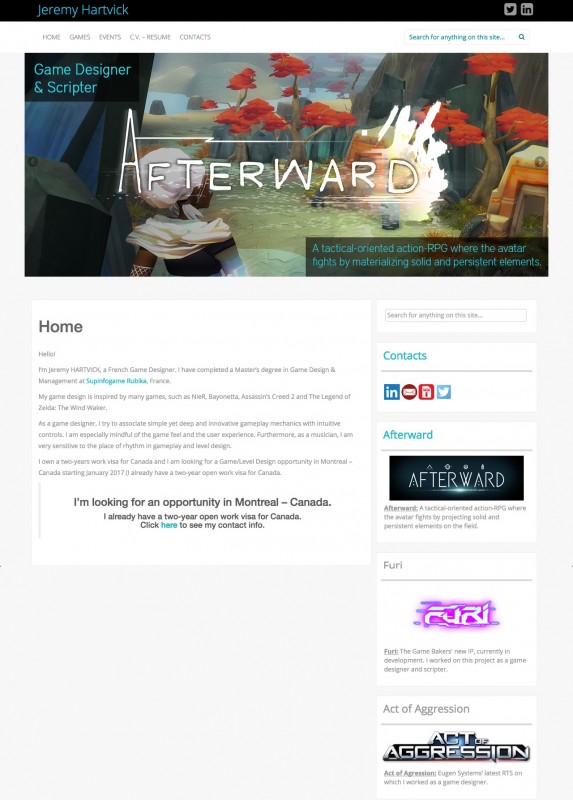
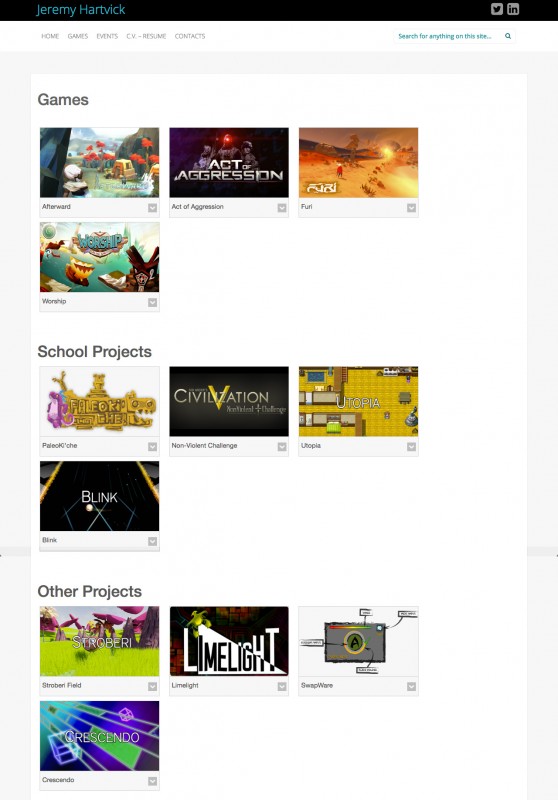
Un portfolio visuellement attirant et facilement navigable est un atout énorme. La forme compte énormément, c’est un constat un peu triste mais c’est une réalité présente à tous les niveaux de la vie sociale.
Au moins un projet de qualité finale
Assurez-vous d’avoir au moins un projet poussé à un niveau de qualité « commercialisable ». Si c’est un artwork, il doit être à la qualité « publiable dans un livre ». Si c’est une animation, un court métrage, il doit être complet (les modèles, le rendu, l’anim, le lighting, le son…). Si c’est un prototype de jeu, essayez d’avoir un trailer qui représente une « vertical slice ». Une partie du jeu qui représente le jeu final (même si bien sûr vous n’avez pas développé la totalité du jeu).
Cela vous permettra au moins d’avoir fait l’exercice de peaufiner à fond un projet. Mais cela aura aussi le mérite de séduire un recruteur qui – la plupart du temps – cherche quelqu’un capable de produire à un niveau de qualité commercialisable. Si vous n’avez que des supers sketchs de personnages, on se dit que vous pouvez… faire des sketchs. Si vous avez plein de croquis de personnages et un artwork en couleur et extrêmement détaillé, on se dit que si on vous en donne le temps vous pouvez amener ce niveau de qualité sur tous les croquis de votre portfolio.
Le meilleur élément de votre portfolio est synonyme de votre meilleur niveau. Tâchez d’avoir au moins un élément qui soit représentatif de ce que vous pouvez faire de mieux.
Mettez en avant votre différence
Si vous avez une spécialité, un edge, une particularité, mettez-la en avant. Après avoir posté une annonce pour un stagiaire ou Game Designer dont le poste serait de tweaker et équilibrer les combats sur Furi, j’ai eu une centaine de candidatures. Un seul candidat avait indiqué qu’il était un GD spécialisé dans le balancing de combat. Son CV n’indiquait presque que des expériences (stages, CDD) dans le design de combat. Son portfolio également. Il était chapeauté d’une citation de Beckett « Ever tried. Ever Failed. Try again. Fail again. Fail better. ». Un état d’esprit qui correspond parfaitement à cette spécialisation particulière dans le game design. N’inventez pas votre spécialité en fonction de l’annonce, soyez honnête, mais mettez en avant vos forces.
Quelques exemples pour le game design :
- Combat designer
- UI designer
- Economy designer
- Controls & camera specialist
- Communication specialist (communiquer le design au sein de l’équipe, un rôle primordial en game design dans les grandes équipes)
- Playtest manager
- Tutorial & learning curve specialist
- Mission designer
Et si votre force est justement de n’avoir aucune spécialité mais d’être extrêmement polyvalent, vous pouvez aussi le détailler :
Game designer polyvalent – documentation, programming, data integration, QA, communication, asset production.
Mentionnez votre parcours en dehors du jeu vidéo
Votre bagage culturel est important pour une industrie créative comme celle du jeu vidéo. Si, comme un de mes amis, vous avez été prof de sport avant de devenir animateur, c’est très intéressant. Cela vous apporte un regard particulier sur l’anatomie, sur la façon dont le corps bouge. Si vous avez fait trois ans de fac de cinéma avant de vous reconvertir en game designer, cela vous donnera un regard spécial sur la réalisation, et sans doute des compétences en montage vidéo. Si comme Grégoire notre programmeur gameplay vous êtes musicien dans un groupe sur votre temps libre, c’est intéressant. Cela démontre une certaine sensibilité artistique et une connaissance de la musique, un élément primordial dans un jeu vidéo.
Si vous aimez aller au cinéma de temps en temps et que vous adorez les voyages, vous pouvez laisser ça au bas de votre CV. Mais si vous avez une expérience significative et complémentaire à la production de jeu vidéo, dites-le.
Votre CV n’est pas votre portfolio
Votre CV n’intéresse presque que vous. Il ne doit pas contenir la totalité des informations vous concernant depuis votre naissance. Il doit rester simple, lisible, et donner au recruteur les informations qu’il cherche en un clin d’œil :
- Vos coordonnées
- L’adresse de votre portfolio (cliquable)
- Vos formations/diplômes significatifs
- Vos expériences professionnelles significatives (pas toutes !)
- Vos compétences techniques très résumées (c’est le portfolio qui doit donner le détail)
- Format recommandé : PDF
Ci-dessous des exemples de CV que je considère « ratés ». Ça ne veut pas dire que les expériences décrites sont mauvaises, ni que les personnes sont incompétentes. Mais juste que sur l’exercice du CV, elles n’ont pas su être assez lisibles, concises, claires.


En comparaison, ces CV sont très sobres mais remplissent très bien leur fonction. Il n’y a vraiment pas besoin d’être un pro de la mise en page pour faire un bon CV.


La lettre de motivation est morte. Longue vie à l’email de candidature !
La lettre de motivation est un concept complètement désuet et plus personne ne la lit. Un simple email de candidature, court, clair, contenant les informations utiles suffit largement. Si vous êtes « particulièrement » motivé pour le poste, vous pouvez sûrement expliquer pourquoi en une phrase. Pas besoin de trois paragraphes.
Un email de candidature peut se résumer à ces informations :
- Intérêt / motivation pour le poste / qualification particulière
- Lien vers portfolio et CV
- Dates de disponibilité (et durée de stage le cas échéant)
- Question(s) si vous en avez
- Coordonnées
Exemple :
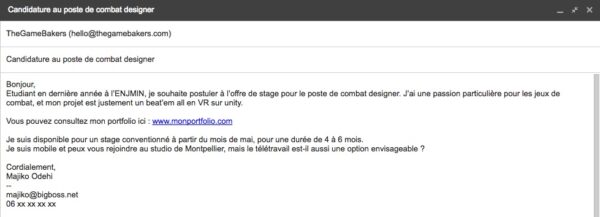
Une alternative plus généraliste pourrait simplement dire :
« J’aime particulièrement vos jeux et serais ravi de rejoindre votre équipe. ». Personne ne se vexera si vous n’êtes pas l’élu qui convient à 200% à l’annonce. Soyez aimable, et votre portfolio fera le reste. Ensuite, tout se joue à l’entretien.
Conclusion
Mon dernier conseil est peut-être le plus important : choisissez votre métier dans le domaine où vous êtes bons. Pas nécessairement dans le domaine qui vous passionne.
On a toujours envie de « faire quelque chose qu’on aime », mais c’est bien souvent un fruit empoisonné. Si vous aimez jouer aux jeux vidéo, ça ne veut pas nécessairement dire que vous êtes bon pour en concevoir. Aimer lire ne fera pas forcément de vous un bon écrivain. Le plus important dans votre métier est de vous sentir bon. De sentir que vos collègues vous trouvent bon. De vous sentir utile et apprécié. De rentrer chez vous satisfait et d’apprécier vos hobbies le plus détendu possible. Peut-être que, comme moi, vous n’êtes pas très bon programmeur mais que vous savez transmettre votre vision à des gens qui sauront l’exécuter. Peut-être que vous aimez dessiner des personnages mais que vous êtes particulièrement bon à concevoir des interfaces. Essayez d’identifier vos facilités, et ne mélangez pas vos passions et vos loisirs avec votre métier. Et si vous êtes extrêmement bon dans ce qui vous passionne, good for you.
Ganbare minna-san. Bon courage à tous.
Liens utiles:
Les écoles de Jeu Vidéo par Dr Geraud
How to become a game designer par GMTK
http://www.snjv.org/metiers-et-remuneration/
http://www.snjv.org/reseau-des-ecoles/
https://flippednormals.com/blog/creative-students-handbook-schools/
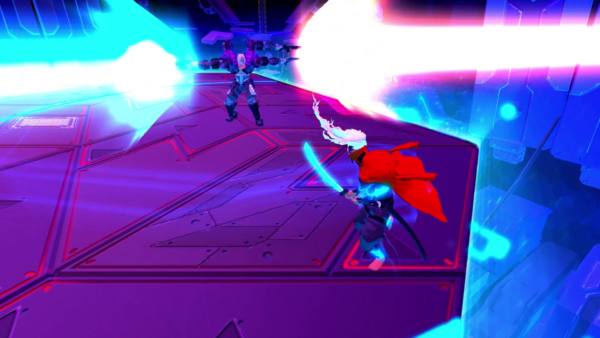


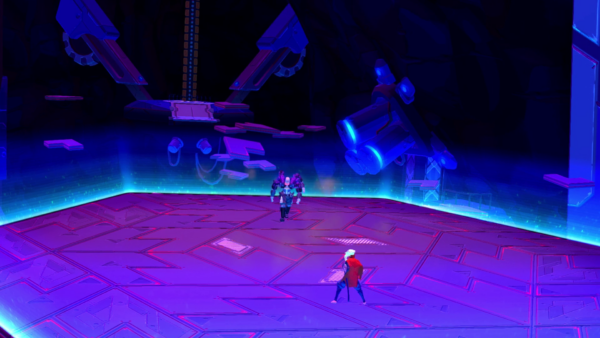
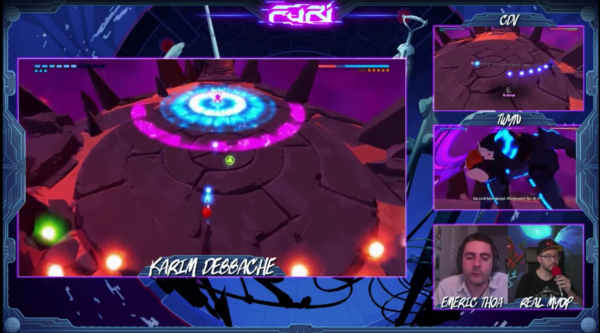
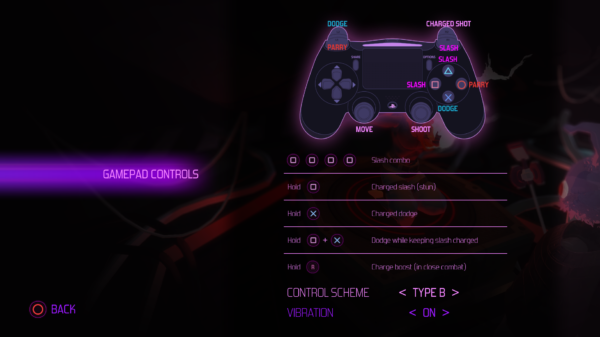










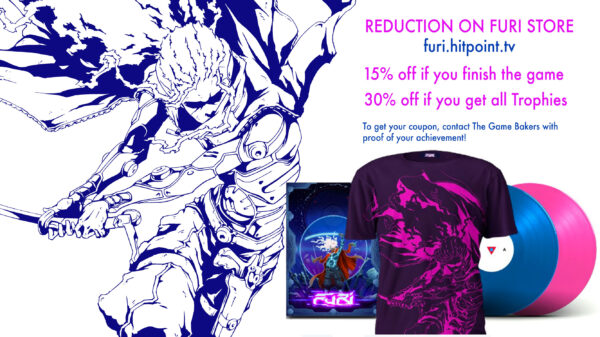
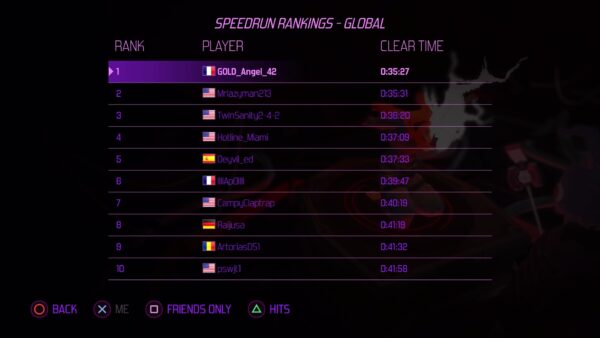
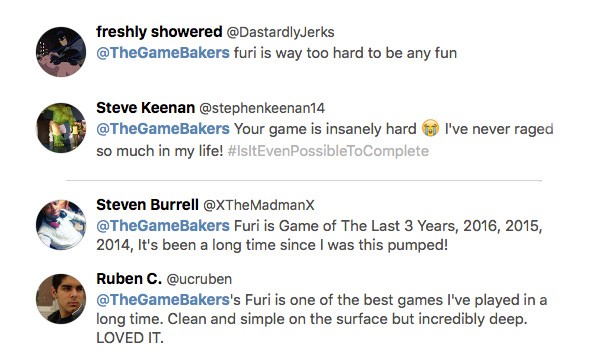
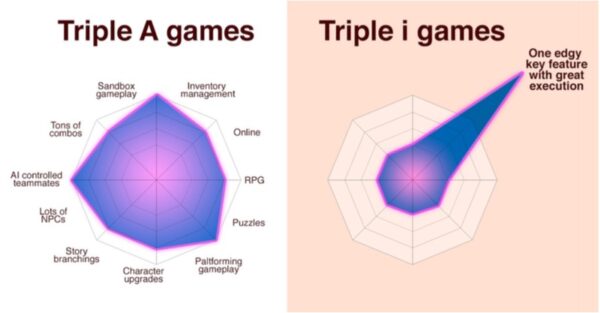 This picture was in the very first document for Furi
This picture was in the very first document for Furi

